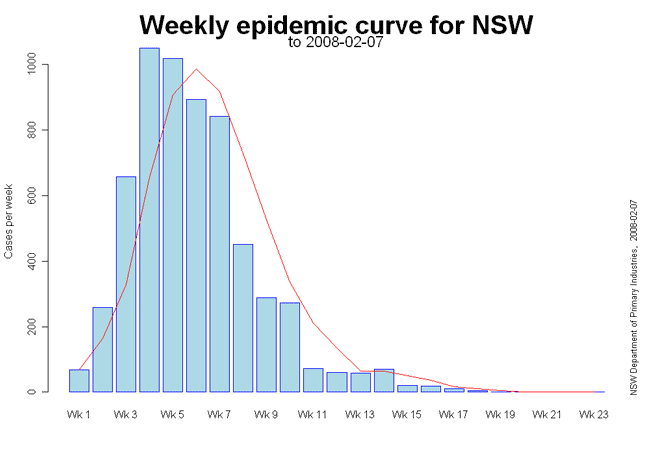
Tara Madgwick
Monday, 14 January 2008The Consultative Committee on Emergency Animal Disease (CCEAD) met last week to hear presentations from a number of key industry figures with the result that movement protocols for the racing and breeding industries are now being reviewed to make them less onerous.
Putting forward their case were Mark Webster speaking on behalf of Inglis and Magic Millions, Greg Rudolph from Racing NSW, Paul Brennan from Racing Qld and Henry Plumptre of Darley.
Some of the most important modifications approved by the CCEAD relate to movement of recovered horses from Purple, Red and Amber Zones and the protocols for yearling sales in 2008.
Protocol for movement of Recovered horses from Purple, Red and Amber zones within Australia effective 11 January 2008
Recovered horses:
Movement within Australia will require:
1.A health certificate
2.A positive Elisa test within past six months, unless otherwise required by the CVO in State of destination (Victoria require it within 60 days).
3.Negative PCR within 72 hours of movement
4.Are not from an IP, SP or DCP
5.Decontaminate under supervision onto transport, travel, decontaminate when unload at destination. Bagged, decontaminated equipment may not require decontamination at destination.
6.These conditions are not required for recovered horses from the Green Zone.
“Recovered horses will now be able to move out of the purple zone and into Victoria and the NSW green zone after decontamination by means of a supervised washdown and a nose swab (PCR),” said Inglis Managing Director Mark Webster.
“We currently have 28 horses in quarantine at Inglis to go to Melbourne this week including 10 racehorses for John Hawkes, a few for John O'Shea and Lee Freedman as well as Dance Hero for Gai Waterhouse, plus several dry Victorian broodmares on their way home.
Next Sunday we have 300 dry and wet Victorian broodmares coming to prepare for the return trip home and this process will now be very simple as they will just come to Newmarket and then Oaklands for a supervised washdown.”
Protocol for horse sales from mid-March 2008 based on maintenance of favourable EI disease situation1.Only recovered or vaccinated horses accepted for the sale
2. 14 day property quarantine for vendors, including 7 day on-property isolation of sale horses including bio-security measures
3.Booster vaccination prior to entry to on-property isolation
4.PCR testing of sale horses on entry into on-property isolation and again at day 4-5 of on-property isolation
5. Post Sale protocol component:Recovered horses:
1.Decontaminate onto transport, travel, decontaminate when unload at destination.
Vaccinated horses:1.Decontaminate onto transport, travel, decontaminate when unload at approved property of destination;
2.On-property isolation and observation for 7 days on approved destination property.
“Movement of yearlings post sale should now be very straight forward and the general view of the CCEAD is that the restricted zones in NSW and QLD will be removed by mid March, as the last new EI case was Dec 22,” Webster added.












